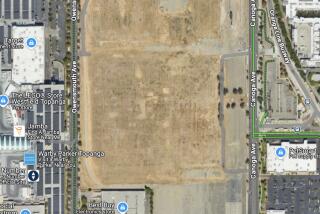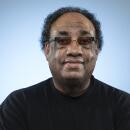Lockheed Vows Tests; Water Panel Is Impatient
Lockheed Corp. officials informed state water authorities Wednesday of their plans to analyze soil at some Lockheed property and former property as part of an investigation into how to clean up groundwater contamination beneath the company’s Burbank plant.
That contamination migrated to drinking-water wells in Burbank and North Hollywood, state water officials said.
But the state officials said they felt Lockheed should be moving faster to clean up the contaminated water wells, which are no longer in use, instead of trying to determine the source of the pollutants.
In a letter to the state Water Quality Control Board, E. L. Graham, general manager of Lockheed’s Burbank plant, said that “if warranted” by an investigation, Lockheed would institute monitoring of wells on former Lockheed property to determine the extent of groundwater contamination caused by Lockheed.
Airplane Hangars
That area, now populated by airplane hangars, was sold by Lockheed to the Burbank-Glendale-Pasadena Airport Authority in the late 1970s, said Lockheed spokesman Jim Ragsdale. The site is on the southern border of Burbank Airport along Empire Avenue.
The plan may also include the installation of contaminated-water cleaning systems on the property, Graham said.
A study recently conducted by the water control board and Lockheed yielded strong evidence that Lockheed had contributed to the contamination that forced closure of more than 30 municipal water wells in Burbank and North Hollywood because of pollution by two chemicals believed to cause cancer.
Graham said Lockheed would conduct further investigations to determine the source of the contamination into the Burbank wells.
However, state water officials said they felt Lockheed should put more emphasis on cleaning the contaminated Burbank wells, and less emphasis on further investigation.
“It’s essential to take immediate action and incorporate the Burbank wells in the cleanup now,” said Hank Yacoub, supervising engineer for the board. “We feel their approach is a bit inadequate at this point. Additional study may take up to one year.”
May Be Reopened
Yacoub said that further migration of contaminants will be controlled with the cleansing of the wells, and that the wells may be reopened.
All of Burbank’s water in the last year has been bought from the Metropolitan Water District.
The investigation proposed by Lockheed is part of a long-range “remedial-action plan” to help decontaminate nearby public drinking-water wells that contain pollutants.
Seven of Burbank’s 10 municipal water wells have been shut because of the contaminants, officials said. None of the wells provides water to Burbank residents. Yacoub said a body of contaminated water from Lockheed may be heading toward the remaining three wells.
Yacoub said he would brief the board about Lockheed’s plan and determine if further action toward Lockheed should be taken by the state. Lockheed also sent its plan to other cities downstream from their plant, including Glendale. A more detailed cleanup plan is due from Lockheed on Oct. 30.
Lockheed officials had already promised last month to remove a concrete tank beneath the plant that may be the source of pollutants. The tank is beneath a manufacturing building at the corner of Empire Avenue and Buena Vista Street near Burbank Airport.
A cleaning solvent containing suspected carcinogens may be seeping into the ground from a hole in the tank, officials said.
Since 1980, high concentrations of trichloroethylene and percholoroethylene, also known as TCE and PCE, have been detected in water drawn from North Hollywood and Burbank.
Lockheed also said it will pump contaminated water from beneath the tank and use special filters to remove the pollutants. Graham said the treated water will be provided to Burbank “under mutually acceptable terms.”
More to Read
Sign up for Essential California
The most important California stories and recommendations in your inbox every morning.
You may occasionally receive promotional content from the Los Angeles Times.











